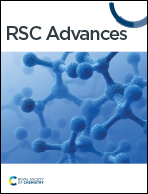Recovery of vanadium and nickel from heavy oil fly ash (HOFA): a critical review
Abstract
Heavy oil fly ash “HOFA” is the fly ash generated in power stations using heavy oil as fuel. HOFA is considered a hazardous waste because it contains considerable amounts of heavy metals. However, it contains significant amounts of vanadium “V” and nickel “Ni”, which are precious metals for manufacturing processes. This paper presents a critical review of various approaches described in the literature for the recovery of V and Ni from HOFA, including processes of leaching, chemical precipitation, solvent extraction, and ion exchange. The optimum operational parameters and their effects on recovery efficiency are discussed. The digestion mixtures of strong mineral acids used for dissolving all metals present in HOFA are also highlighted. The leaching processes of V and Ni use mainly acidic and alkaline solutions. Bioleaching is a promising environmentally friendly approach for the recovery of V and Ni through using appropriate bacteria and fungi. After leaching, V and Ni compounds are recovered and purified using various techniques, including chemical precipitation, solvent extraction, and ion exchange. In most cases, V and Ni are recovered as thermally decomposable compounds that undergo calcination to produce V2O5 and NiO. Eventually, V and Ni are recovered as pure oxides in most approaches, but pure metals are obtained in exceptional procedures.

- This article is part of the themed collection: 2023 Reviews in RSC Advances


 Please wait while we load your content...
Please wait while we load your content...